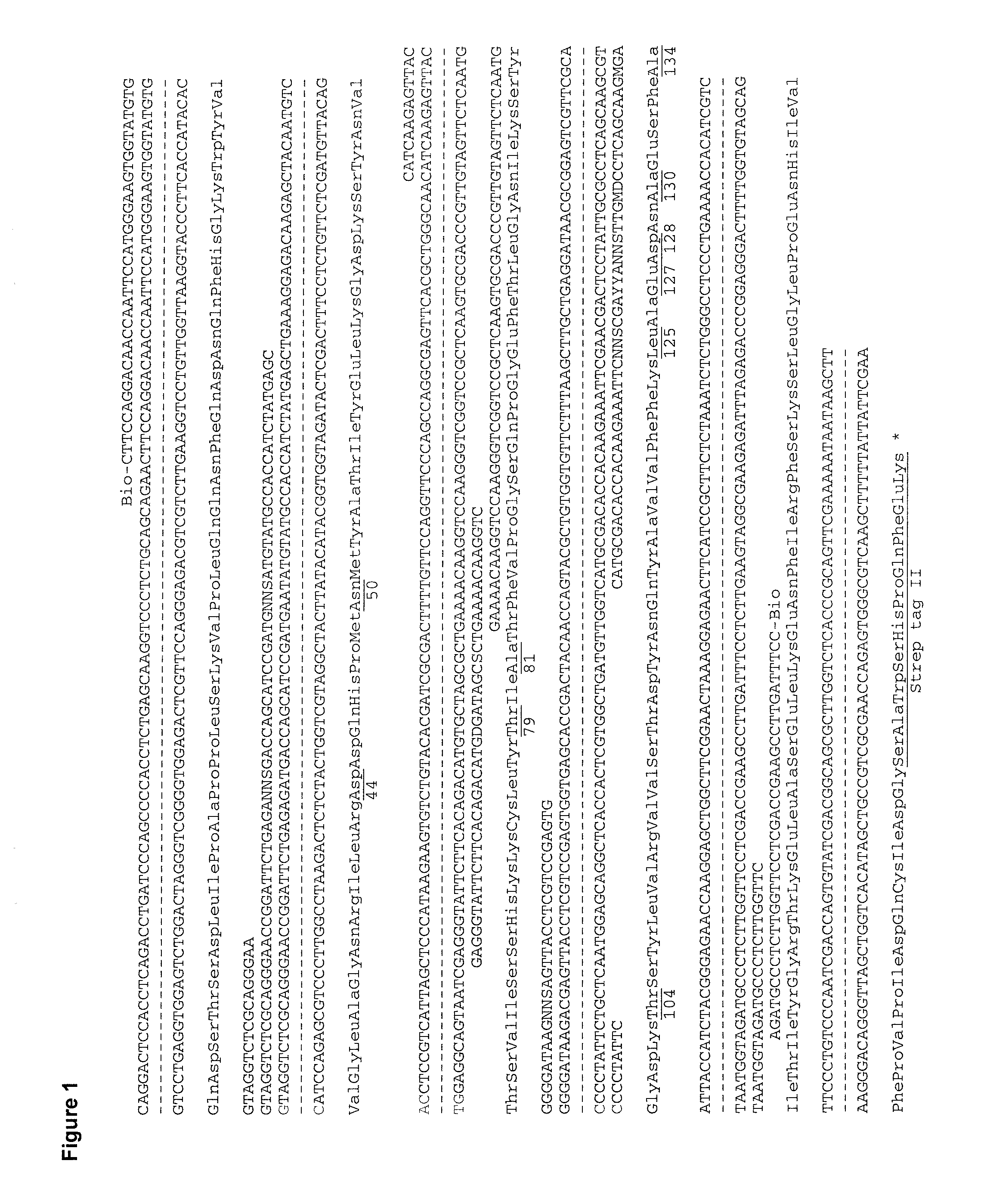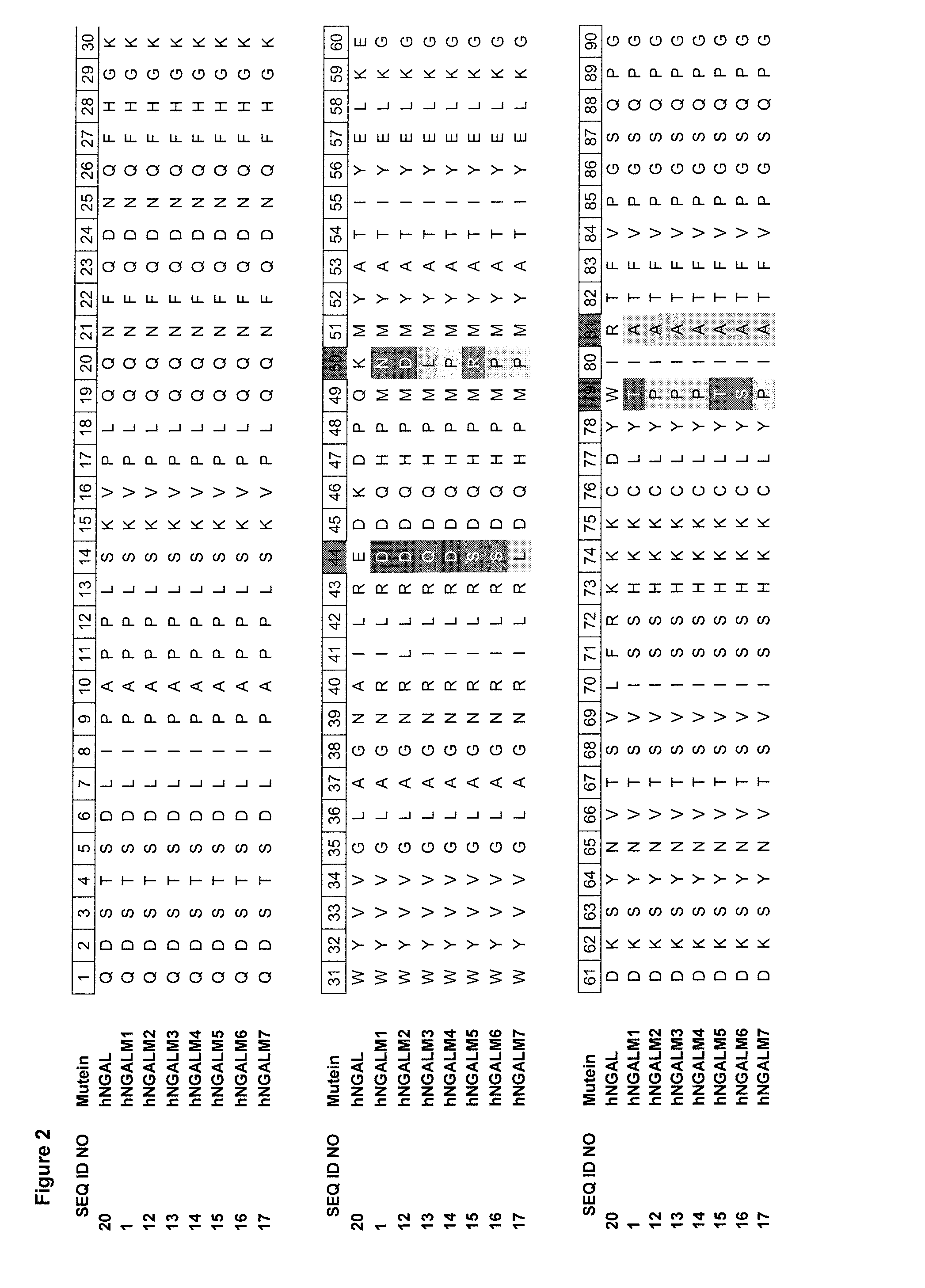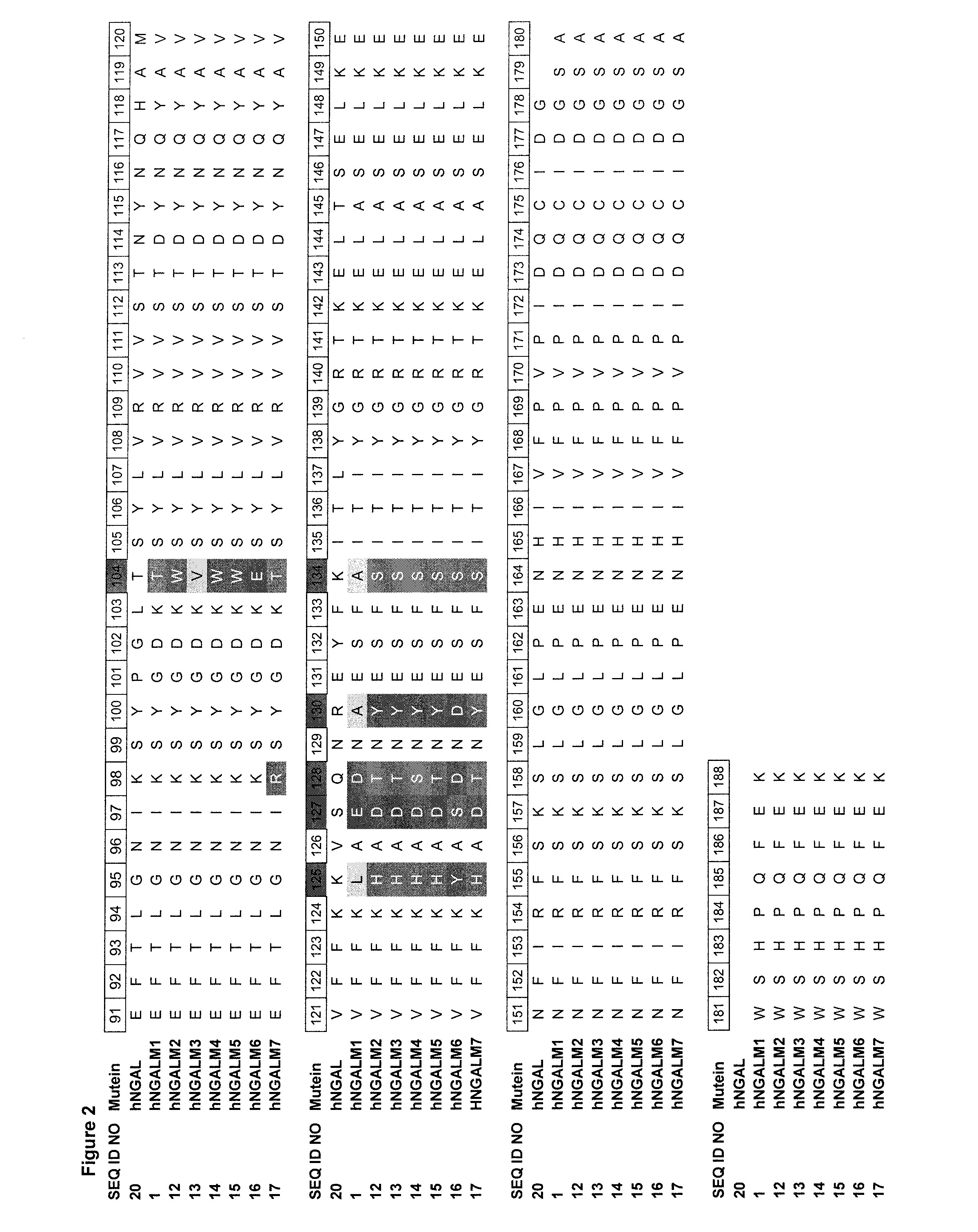Muteins of human lipocalin 2 with affinity for ctla-4
a technology of lipocalin and ctla-4, which is applied in the field of immunoglobulin, can solve the problems that the antibodies and fragments of the antibodies may not be suitable for all potential applications, and their molecular size is rather larg
- Summary
- Abstract
- Description
- Claims
- Application Information
AI Technical Summary
Benefits of technology
Problems solved by technology
Method used
Image
Examples
example 1
Construction of a Mutant Lcn2 Phage Display Library for the Affinity Maturation of CTLA-4-Specific hNGAL Muteins
[0175]A mutant genetic library on the basis of a CTLA-4 specific Lcn2 mutein hNGALM1 with the SEQ ID NO: 1 was generated by site-directed randomization of 10 amino acid positions located mainly in the structurally variable loop regions in order to select an affinity matured mutein. Mutagenesis and polymerase chain reaction (PCR) assembly of this region was essentially performed according to a published strategy (Beste et al. (1999) Proc. Natl. Acad. Sci. USA 96, 1898-1903; Skerra (2001) J. Biotechnol. 74, 257-275), this time using a two pot amplification reaction with the template hNGALM1 and oligodeoxynucleotides (sequences of SEQ ID NO: 2 to SEQ ID NO: 8) as illustrated in FIG. 1. For the first PCR reaction Oligodeoxynucleotides were designed such that the primers with sequences of SEQ ID NO: 2 to SEQ ID NO: 5 carried degenerate codons at the amino acid positions 44, 50,...
example 2
Phagemid Presentation and Selection of NGAL Muteins with Affinity for Extracellular Domain of Dimeric Human CTLA-4
[0180]Phagemids obtained from Example 1 were subjected to phage display selection against the recombinant biotinylated extracellular domain of dimeric human CTLA-4 (Schonfeld et al. (2009), PNAS 106, 8198-8203).
[0181]Phagemid display and selection of CTLA4-specific lipocalin muteins employing magnetic streptavidin beads was essentially carried out as described in Example 27 in International Patent application WO 2005 / 019256 except the following deviations:
[0182]Phagemids and target were incubated in solution and the selection stringency was increased either by limiting the target concentration (1.2, 0.2 and 0.04 nM) and incubation time (5, 20 min) for phagemids with the target in order to select faster kon rates or by competition with 12, or 25 nM of an antagonistic CTLA-4 antibody BNI3 (BD Bioscience) at a target concentration of 1 nM. The phagemids were eluted both und...
example 3
Identification of CTLA4-Specific Muteins Using High-Throughput ELISA Screening
[0185]Screening of the muteins selected according to Example 2 was performed essentially as described in Example 3 of international patent application WO 2006 / 56464.
[0186]Therein, NGAL variants equipped with a T7 detection tag (Novagen) as well as a Strep-tag II affinity tag (IBA) were soluble expressed in a 96 well microtiter plate using the E. coli strain TG1 / F with phNGAL37 SEQ ID NO: 10. This vector corresponds to phNGAL15 SEQ ID NO: 11 as described in the following example 4 with an N-terminal T7 tag consisting of 11 amino acids (MASMTGGQQMG). Lipocalin mutein expression was induced overnight at 22° C. at 700 rpm with anhydrotetracycline (0.2 μg / ml) at an OD550 of 0.6. Afterwards, cells were lysed (100 mM Na-borate, pH 8.0, 80 mM NaCl, 1 mM EDTA, 0.025% w / v lysozyme) for 1 h under agitation. To minimize non-specific binding in the subsequent ELISA screen, the crude cell lysates were supplemented with ...
PUM
| Property | Measurement | Unit |
|---|---|---|
| temperature | aaaaa | aaaaa |
| pH | aaaaa | aaaaa |
| concentrations | aaaaa | aaaaa |
Abstract
Description
Claims
Application Information
 Login to view more
Login to view more - R&D Engineer
- R&D Manager
- IP Professional
- Industry Leading Data Capabilities
- Powerful AI technology
- Patent DNA Extraction
Browse by: Latest US Patents, China's latest patents, Technical Efficacy Thesaurus, Application Domain, Technology Topic.
© 2024 PatSnap. All rights reserved.Legal|Privacy policy|Modern Slavery Act Transparency Statement|Sitemap



